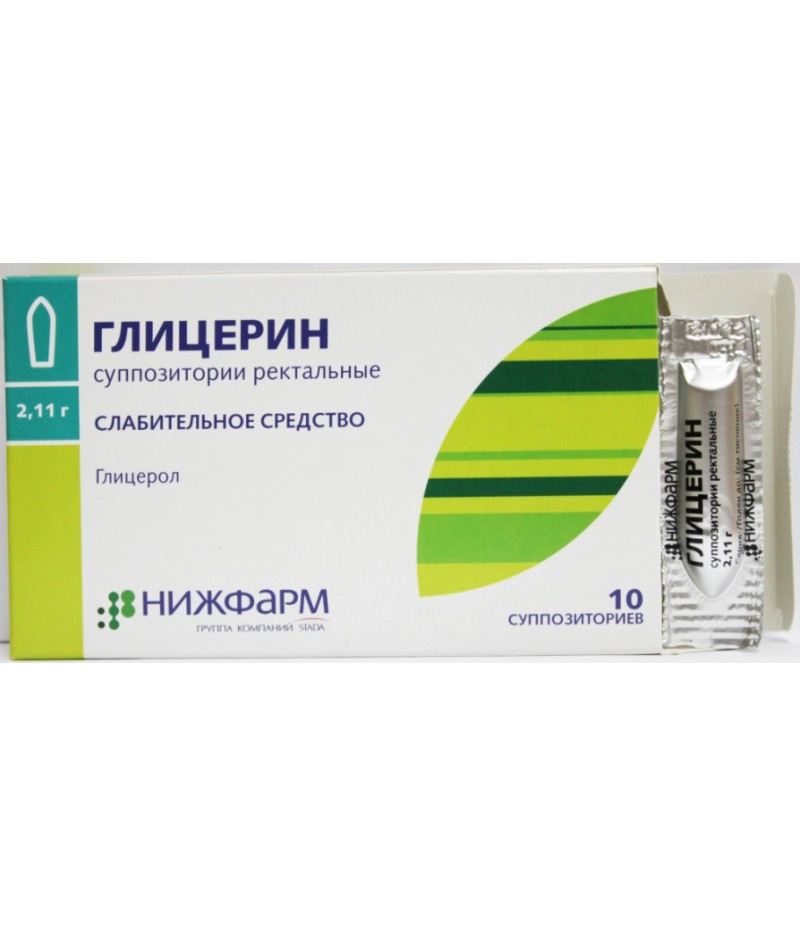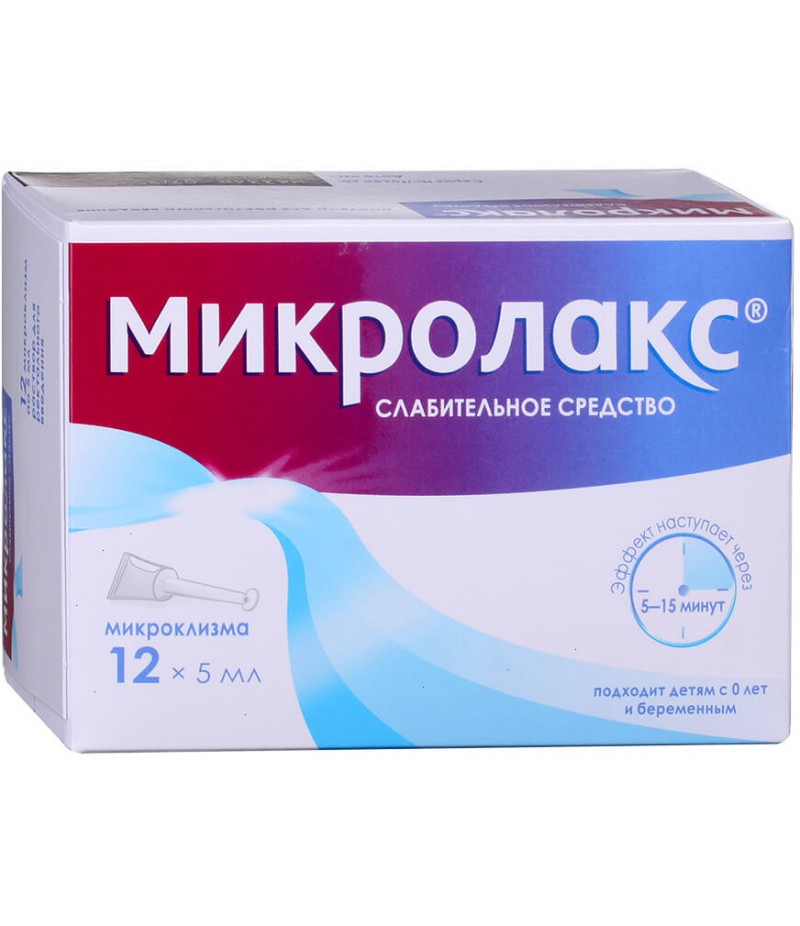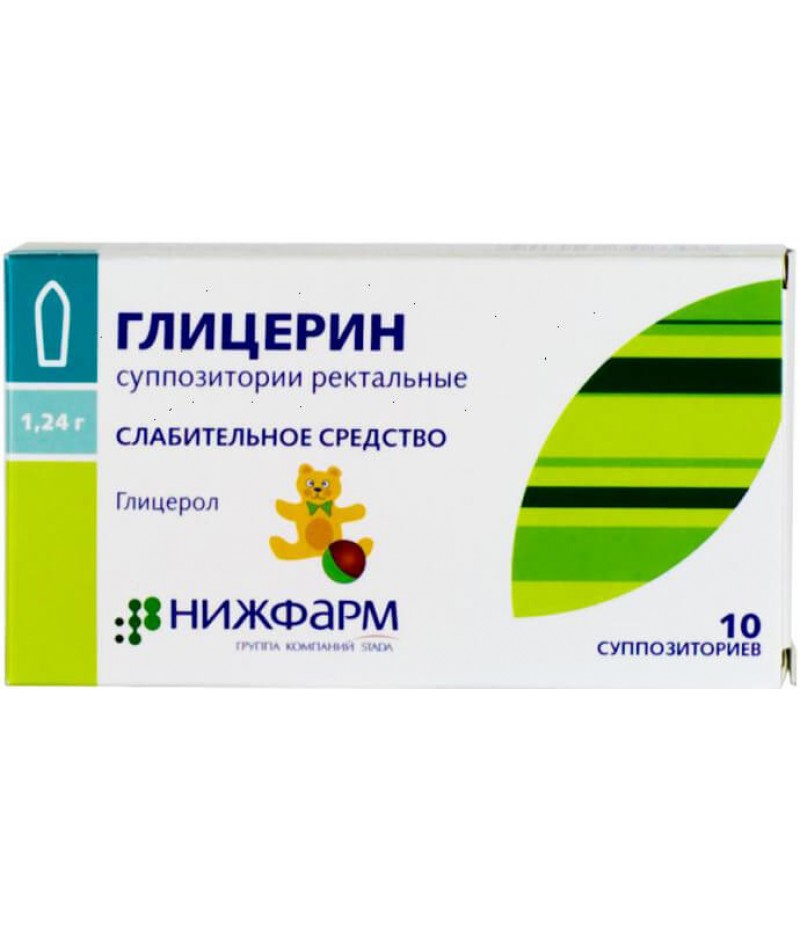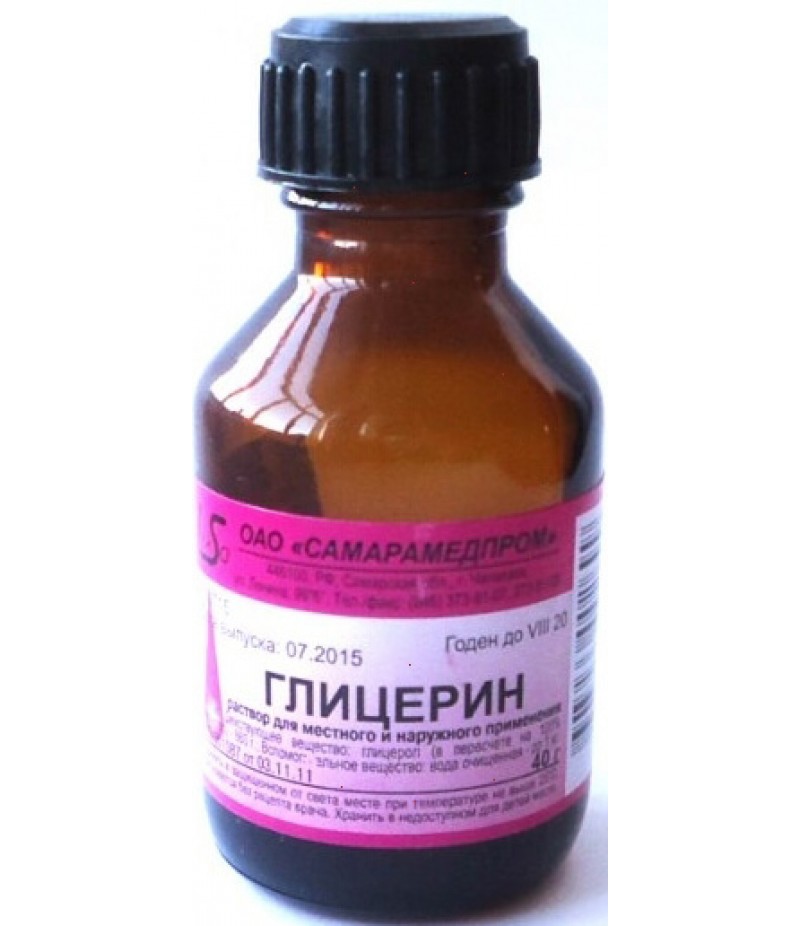Glycerin supp. rectal 2.11gr #10
- $7.75
- 3 or more $6.90
- Availability:In Stock
Instruction for GlycerinYou can buy Glycerin hereCompositionIn a bottle of Glycerin solution for external and topical application contains 25 grams of distilled glycerin (glycerol).The composition of one rectal glycerin suppositor..
Instruction for Glycerin
You can buy Glycerin here
Composition
In a bottle of Glycerin solution for external and topical application contains 25 grams of distilled glycerin (glycerol).
The composition of one rectal glycerin suppository includes 1.44 / 2.46 grams of glycerol as an active ingredient and auxiliary ingredients: Polyethylene glycol (polyethylene glycol) in an amount sufficient to prepare a single suppository with a mass of 1.53-1.69 / 2.61- 2.89 grams; Acidum stearicum (stearic acid); Sodium carbonate decahydrate (sodium carbonate decahydrate).
Description of the release form
Medical glycerol has two dosage forms:
rectal suppositories;
solution for local and external use.
Suppositories have a pointed torpedo shape, their color is close to white. Baby candles are produced in weight of 1.53-1.69 grams, candles for adults have a mass of 2.61 to 2.89 grams.
Liquid form of the drug is a syrupy transparent colorless liquid of viscous consistency, odorless and with a sweetish taste. The medium of an aqueous solution of glycerol is neutral.
pharmachologic effect
Rectal glycerol suppositories belong to a group of drugs that are used to treat constipation.
The solution is referred to the pharmacotherapeutic group of dermatological agents having a softening and protective effect.
Pharmacodynamics and pharmacokinetics
In its pure form, glycerol irritates the skin, but this effect completely disappears when the substance is diluted with water, vaseline or lanolin. Used as an external agent, glycerol has a dermatoprotective effect, softens and restores the skin.
Antiseptic properties of glycerol allow using it to prevent infection of wounds on the skin by infection.
Rectal administration of glycerol provokes a laxative effect. The product softens the stool masses, gently irritates the intestinal mucosa and stimulates the contractile capacity of the walls of the rectum.
Glycerin (for internal use) can increase osmotic pressure and reduce ocular and intracranial pressure. The use of liquid glycerine inside also helps to reduce cerebral edema.
Indications for use
Pharmacy Glycerol is shown:
Rectally in the form of microclyster and candles - with constipation and cracks in the anus.
Inside - with intracranial pressure, with glaucoma, Reye's syndrome (acute hepatic encephalopathy, it is recommended to use the drug in combination with other therapeutic measures.
Outer in the form of applications - to soften excessively dry skin and mucous membranes.
A solution of sodium tetraborate in glycerin (borax) is used for the treatment of candidiasis (thrush), inflammation of the palatine tonsillitis (tonsillitis), inflammation of the mucous membrane and pharyngeal lymphoid tissue (pharyngitis), as well as for treatment of decubitus and fungal affected skin.
Wide use of glycerin solution in medicine is provided due to its properties: the physicochemical characteristics of glycerin allow to increase the viscosity indexes or, on the contrary, dissolve this or that drug.
Since the substance is characterized as non-toxic, it is also used in the pharmaceutical industry. Added to medical ointments, creams and pastes, glycerol prevents them from drying out and, having the properties of an antiseptic, disinfects them. As an auxiliary component, glycerol is also added to the tablets.
Laxative candles based on glycerol are used to treat children and adult constipation of various genesis, facilitating the emptying of the intestine from its contents.
In folk medicine, the drug is often used to treat diseases of the throat. Effective cough remedy - lemon, honey and glycerin. To prepare this medicine, take a juice of one lemon and 35-40 ml (2 tablespoons) of glycerin. Add the honey to the mixture, mix thoroughly and take 1 teaspoonful six to eight times a day for a strong cough.
Glycerin in cosmetology. What are glycerin based cosmetic products made of?
Glycerin for the face is used in the composition of moisturizing, nourishing and toning masks, in the composition of cleansing and refreshing lotions, creams and mixtures from acne. Thus, it is difficult to overestimate his benefit for the person.
Useful properties of glycerin for the skin are expressed in the ability of this substance not only to moisturize, but also to smooth, treat and protect the skin from contamination and microbial penetration.
The face mask with glycerin can include dried flowers, leaves of plants (for example, aloe or mint), berries (both dry and fresh), rice flour, oat flakes, dry clay, mineral water.
One of the most popular is the mask with glycerin and vitamin E. Vitamin E for the face is truly indispensable: it prevents early aging of the skin, smooths wrinkles, relieves fatigue and even has the ability to treat problematic skin in adolescents.
To prepare the mask, take 10 capsules of vitamin E and squeeze their contents into a bottle of glycerol (25 ml). The resulting mixture of glycerol and vitamin E is well shaken and applied to the pre-cleaned face for 40-60 minutes, after which they wipe the face with a napkin (no need to wash). The greatest effect for the skin is noted if you do this procedure just before bedtime.
Glycerin anti-wrinkle masks can also be prepared using as auxiliary components honey, oat flakes, vitamin B1 or ascorbic acid.
To prepare lotions for the face, glycerol is mixed with broths of herbs, infusion of lemon peel, floral cologne. To prepare the mixture from acne, mix Nitrate alcohol (20 ml), a good cologne (40 ml), water (80 ml) and glycerol (5 ml).
In combination with vitamin C, and, more precisely, with its less stable form, - L-ascorbic acid, glycerol is used to prepare antioxidant serum.
Due to the properties of ascorbic acid stimulate the production of collagen in the skin and protect it from the negative effects of UV rays, this serum not only minimizes the number of wrinkles, but also makes the scars visible on the skin less visible.
To prepare this remedy, you must take equal amounts of vitamin C, vegetable glycerin and distilled water and mix them in a vial of dark glass. A thin layer of whey is applied to the face before going to bed and left on all of it for the whole night.
Glycerin for hair is used in the form of shampoos, balms and hair masks. This is due to its ability to effectively moisturize, soften and thicken hair, give them shine and stimulate growth.
Shampoos and hair masks with glycerin can be bought in the store, and cook yourself. In addition, deciding to make such a cosmetic product at home, you do not have to puzzle over where to get the ingredients for it: a soap base, vitamins, and herbal preparations can be found in any pharmacy.
Apply glycerol and to care for hands. The simplest pharmacological product is the so-called "smelly handshake", which is a mixture of ammonia and glycerol.
At home, the glycerin liquid is prepared by mixing in equal proportions glycerol with ammonia. Rubbing this mixture is useful not only for the skin, but also for the nails - after several procedures the nails get a beautiful color and start to shine.
Glycerin for hands can also be used as a part of potato or sour-milk masks. Improve the condition of the skin of hands and warm baths with starch and glycerol, for the preparation of which take 20 ml of glycerol, 2 tablespoons of starch and 500 ml of warm water. The bath is taken until the water begins to cool down.
For feet, glycerin is recommended for the treatment of cracks on the heels and softening of coarse skin. Hearts like a baby are a dream for every woman.
However, prolonged exposure to the sun, wearing open shoes and things made of synthetic materials, as well as insufficient care for the skin of the legs leads to roughness, peeling and cracking of the heels.
Effective means from rough heels is a mixture of glycerol and acetic acid. For its preparation in a bottle of glycerin, you should top up the vinegar with a vinegar. The mixture in the vial is shaken and then applied with a cotton swab or cotton sponge to problem areas.
Before using glycerin with heels for heels, it is recommended to skin the feet beforehand and scrape it with a pedicure brush. After applying the product on their feet, they put on cellophane bags, and on top of them - socks. The duration of the procedure is from half an hour to 40 minutes, but it is best to leave the mixture for the whole night.
Gelserin and ammonia are no less effective for heels. The mixture is prepared as simply as described above, only the ingredients for its preparation - ammonia and glycerin - are taken in a 1: 1 ratio. Mixture with ammonia leg alcohol is also recommended to be applied to the skin before going to bed and left overnight.
Another simple recipe for glycerin for heels is a recipe for a mixture containing glycerin, 10% ammonia solution, 95% ethyl alcohol and purified water.
Preservation of flowers in glycerin
Answering the question "What is glycerin?", We can say that this remedy is to some extent a preservative.
It is often used as a preservative for meat, wheat grains, erythrocytic mass, reindeer antlers, etc. Also glycerol is used for preservation of flowers.
There is a fairly large amount of advice on how to preserve flowers in glycerin. It is important to remember that flowers with thin leaves and very delicate petals with this method of preservation preserve the appearance much worse than plants with denser leaves and fleshy stems (that is, this method of preserving the bouquet is more suitable for roses or orchids than for violets or poppies).
Benefits and Harms of Glycerol
It is believed that glycerol, used for cosmetic purposes, acts to the detriment of the skin. The following statements are only partially true.
The hygroscopic properties of this substance allow it to absorb moisture from the environment and retain it where it is applied. As a result, the skin is formed the thinnest wet film, thanks to which the same effect of moistening is felt.
However, studies have shown that in cases where air humidity does not exceed 65%, glycerol "sucks" water from the deep layers of the skin (instead of taking moisture from the air) and keeps it on the surface of the skin.
That is, the harm of vegetable glycerin is that the dry skin is dried up even more, since water from young healthy cells is sucked in order to moisten the dead skin cells of the surface layer of the skin.
Thus, in cosmetology, the use of glycerol is recommended only with sufficient humidity of air.
Contraindications
Glycerin suppositories against constipation are contraindicated when:
hemorrhoids in the acute stage;
cracks in the anus;
inflammatory and neoplastic diseases of the rectum;
appendicitis;
bleeding;
diarrhea;
hypersensitivity to glycerol.
Glycerol intake is contraindicated in diabetes mellitus, people with liver and / or kidney disease, cardiovascular disorders.
Side effects
Glycerol, used in large quantities, provokes dehydration of tissues. In addition, solutions of this agent can cause allergic reactions, expressed in the form of burning, irritation of the skin and mucous membranes.
Prolonged use of rectal suppositories can lead to irritation of the rectum (10-15 ml of pre-heated vegetable oil - for example, olive oil or sunflower oil) should be injected into the intestine and the physiological process of defecation should be disturbed. In rare cases, the development of catarrhal proctitis is possible.
Taking the glycerol solution inside may cause nausea, vomiting, headache, thirst, arrhythmia and hyperglycaemic coma. Long-term administration results in dehydration.
Instructions for use Glycerine (dosing regimen)
Candles Glycerin: instructions for use
To eliminate constipation, suppositories with glycerin should be injected into the rectum once a day. The optimal time for the introduction of a rectal suppository is 15-20 minutes after breakfast. According to the instructions for glycerin suppositories, their use is discontinued after normalization of the peristalsis of the intestinal tract. In this case, treatment is recognized as successful. For children, a child's dosage is used.
How long do glycerin suppositories start? After about 10 minutes.
Overdose
Overdose develops with the systematic use of glycerol. Its symptoms are expressed in the form of dizziness, confusion, increased dryness in the mouth, a sharp increase in thirst, a pronounced dehydration of the body, arrhythmia, kidney failure.
Interaction
The drug interaction of glycerol is not described.
Terms of sale
Without recipe.
Storage conditions
Store in a dry, protected from light and out of reach of children, at a temperature of 2 to 25 ° C.
Shelf life
For liquid Glycerin - 5 years from the date of manufacture.
For rectal suppositories - 2 years.
Glycerin for children
According to the instruction, glycerine suppositories for children over 6 years of age are recommended to be used in an amount of 1 to 1.53-1.69 grams or 2 suppositories with a mass of 2.61 to 2.89 grams per day.
Candles with glycerine for children aged 2 to 6 years appoint 1 suppository with a mass of 1.53-1.69 grams per day.
Glycerin for newborns
Is it possible to use glycerine candles for newborns? It is recommended to use them not earlier than the child turns 3 months, with special children's glycerin suppositories.
However, in cases where it is really necessary, candles with glycerine and for newborns are prescribed.
The drug is not addictive and does not have a negative effect on the body as a whole. However, with unsystematic application in unlimited quantities, there may be violations of physiological peristalsis and defecation, enterocolitis, drug diarrhea, intestinal obstruction.
Glycerin in pregnancy
When pregnancy candles with glycerin are one of the safest and most effective means to cope with constipation. Glycerol is not toxic, so the composition of suppositories does not harm the health of the mother and child.
By the way, according to reviews, glycerin suppositories are also effective in pregnancy, and after childbirth and breastfeeding. They are used for constipation caused by:
change in intestinal peristalsis due to hormonal adjustment and stress in the delivery;
hemorrhoids;
segmental spasm of the large intestine;
psychological fear of the act of defecation (especially when tearing the birth canal).
The 10% solution of borax in glycerin, which is used to remove fungus and treat candidiasis, is also a solution for pregnant women.
Moreover, its use is allowed even in the early stages of pregnancy, when the use of most other drugs is highly undesirable or completely prohibited.
special instructions
Glycerin - what is it?
Glycerin is an organic compound that belongs to the class of substances of polyhydric alcohols.
Since in compound 3 of the hydroxyl group (-OH), it is a trihydric alcohol or, in other words, a triol (compounds in which the hydroxyl groups 2 - for example, ethylene glycol - are called dihydric alcohols or diols).
Being the simplest representative of the group of trihydric alcohols, the compound is characterized by typical chemical properties.
The name of the substance in Latin is Glycerinum. Product name (European Pharmacopeia) - Glykamed.
Its structural formula has the following form:
CH2-CH2-CH2
| | | | | |
OH OH OH
Chemical molecular formula of the substance: HOCH2-CH (OH) -CH2OH.
The molar mass is 92.094 g / mol.
In nature, the compound is widely distributed in the form of glycerides (or acylglycerols), which are esters formed by organic or mineral acids and glycerol.
Glycerides in turn are a key component of oils and fats of natural origin.
For example, one of the most common long chain triglycerides, in all three chains of which the remains of oleic acid are contained, is glycerol trioleate. Its natural sources are peanut, corn, olive, soybean, sunflower oil.
The homologues are butanetriol-1,2,4 and pentantriol-1,3,5.
Preparation of glycerol
Technical glycerin in industry is obtained as a by-product of saponification of food fats, which in the presence of various catalysts (enzymes, acids, alkalis) are split into glycerol and aliphatic carboxylic (fatty) acids.
To obtain glycerol and soap, the saponification of glycerol tristearate (glycerol ester of stearic acid) with sodium hydroxide is used.
In the industry, synthetic methods of obtaining a substance, one of which is chlorohydrin, are increasingly used.
The method of synthesizing glycerin by oxidizing propene (propylene) to the simplest unsaturated aldehyde propenal (acrolein) is also used.
Other ways to get the substance are:
method of glycolic fermentation of sugar;
hydrolysis of starch.
Distilled glycerol is produced in accordance with GOST 6824-96
Physical properties
In pure form, glycerol is transparent, odorless, sweet to the taste, has hygroscopicity (that is, it can absorb water vapor up to 40% by weight). It is soluble in water: the substance is well mixed with water in various proportions, which is accompanied by the release of heat and a decrease in volume (by contraction).
Wikipedia indicates that glycerol is highly soluble in water, alcohols, moderately in ether and ethyl ether of acetic acid and is not soluble in most hydrocarbons, ethers and chloroform.
The melting point of the substance at normal pressure is 17.8 ° C, the boiling point is 290 ° C (with weak decomposition). The density of glycerol is 1.26 g / cm3.
The viscosity of glycerol is determined by the dynamic viscosity coefficient, which varies with temperature. Thus, the viscosity index at 0 ° C is 12100 mPa.s, at 40 ° C it is 330 mPas, and at a temperature of 200 ° C it is 0.22 mPa.s.
Chemical properties of glycerol, with what does glycerin react?
Despite the fact that it is the simplest trihydric alcohol, glycerol enters into chemical reactions, which are characteristic for monohydric alcohols.
Glycerol is able to interact with a large number of organic and inorganic compounds, resulting in the formation of complex, simple (aliphatic and aromatic) esters, as well as metal acylglycerols.
Glycerol reacts with sodium, which replaces all three hydrogen atoms in the hydroxyl groups -OH.
The substance has the ability to form azeotropic mixtures with naphthalene, its individual derivatives and a number of other substances.
Glycerin forms 3 series of metal derivatives - glycerates. Moreover, they are formed even when the substance interacts with heavy metal oxides. This is evidence that the properties with which acids are characterized, it is more pronounced than that of monohydric alcohols.
Also, the substance is able to react with hydrogen halides and react with nitric acid. The result of interaction with hydrohalic acids and halides is mono- or dihalogenhydrins, with nitric acid-trinitroglycerin (a heavy oily substance with explosive and, to some extent, medicinal properties).
The reaction of glycerol with copper hydroxide makes it possible to obtain a blue solution. In the interaction of polyhydric alcohols with Cu (OH) 2 in the presence of alkali, the hydroxide dissolves, the product of the reaction is a clear blue liquid.
This is a qualitative reaction to glycerol, which is used not only to detect glycerin, but also to detect other polyhydric alcohols containing hydroxyl groups (-COOH) at neighboring carbon atoms.
When interacting with inorganic and carboxylic acids, esters are formed (complete and incomplete), as a result of the dehydration of glycerol, acrolein is obtained.
Like other alcohols, glycerol is oxidized. Depending on which substance is used as an oxidant, this reaction can yield: glycerol aldehyde, glycerol, mesoxalic or tartronic acid, dihydroxyacetone.
Under the action of potassium permanganate or potassium dichromate, acidic glycerol is oxidized to carbon dioxide CO2 and hydrogen H2O.
Reacting with bromine water, glycerol is oxidized to dioxoacetone. This Denizhe reaction, which is one of the methods for the qualitative and quantitative determination of glycerin. The resulting dihydroxyacetone is reduced with a Nessler reagent and a Fehling solution.
How to recognize glycerin?
For the recognition of glycerin, the reagent is copper hydroxide. Formula of the reagent for the recognition of glycerin - Cu (OH) 2.
To recognize the substance, it is necessary to take CuSo4 and NaOh. When they interact, freshly precipitated copper hydroxide is obtained, which, reacting with polyhydric alcohols, forms a transparent solution of blue color.
What is glycerin used for?
Glycerol industry, in the paint and varnish industry, in electrical and radio engineering, in the tobacco and military industries, in agriculture. In addition, the product is used to blacken the rubber with their own hands.
Glycerin monostearate is a high-quality food emulsifier. In addition, it has the properties of a dispersant and a stabilizer. Having a rejuvenating effect, it helps to preserve the freshness of foods, stabilizes and improves the structure of fats.
Glycerin in cosmetics provides the binding of free water, thus eliminating the need to add to the latest synthetic preservatives and providing products with a shelf life sufficient for their use.
In addition, it allows you to transport the effective ingredients of the cosmetic product directly to the skin so that they can show their useful properties where necessary.
Glycerol found application in everyday life. It helps to remove the "difficult" spots from clothes, it is used as a polish for furniture, mirrors and parquet, and also to restore the appearance of leather products.
Tourists use glycerine and potassium permanganate for fire: a slightly inflammable material is put a little potassium permanganate and then add one or two drops of the substance. After about 15 seconds, smoke appears and spontaneous combustion occurs.
Glycerol is used to moisten tobacco for hookah. At the same time, it is better to add a means intended for smoke machines to the hookah, since it is originally intended for evaporation. Addition of glycerol to tobacco allows:
increase its smokiness;
Reanimate old and parched tobacco.
Glycerol is used to impart the necessary density to a solution for soap bubbles.
On the Internet there is a huge amount of resources, telling how to make a good soap solution at home for a children's holiday. One of the most popular soap bubble recipes is a recipe that involves mixing a glass of dishwashing liquid (preferably with the least amount of impurities) with 4 cups of boiled or distilled water and 40-60 ml of glycerol.
Many are interested in what can be replaced at home with glycerol. Analogous with this substance has the properties of ordinary sugar. It also increases the density of the finished solution and improves the quality of the bubbles.
Reviews about Glycerin
Reviews of the candles Glycerin - positive. All of them testify to the high efficiency of glycerin suppositories with constipation of a different origin.
Reviews of Glycerin, used for facial skin and for hair, allow you to conclude that this tool in cosmetology is almost indispensable. When used correctly, it quickly has the expected effect and, in addition, is very affordable and inexpensive.
Especially loved by women is a mixture of glycerine and vitamin E. By its effectiveness, the drug is not inferior to expensive pharmacy cosmetics, but it costs an order of magnitude cheaper.
No less valuable is the borax in glycerin. Bacteriostatic activity of the drug can effectively treat them such unpleasant diseases as thrush, stomatitis, pressure sores, tonsillitis and pharyngitis.




